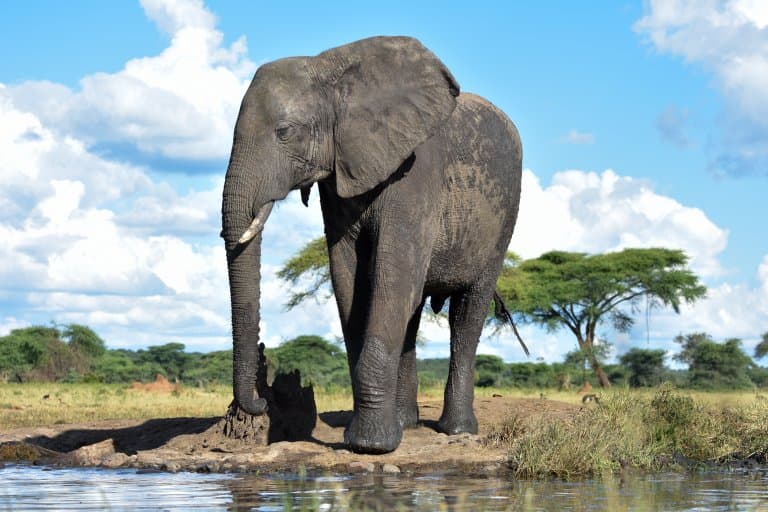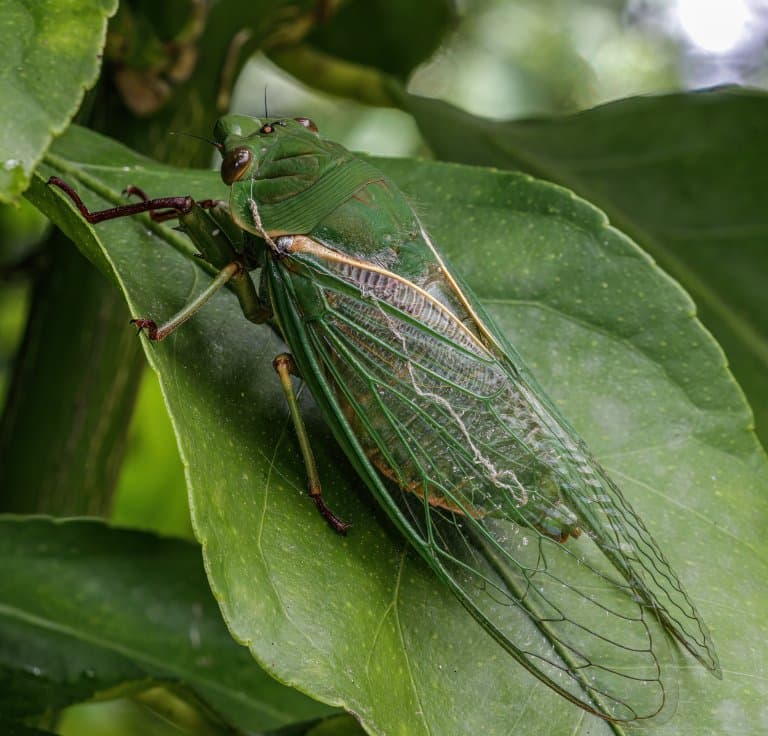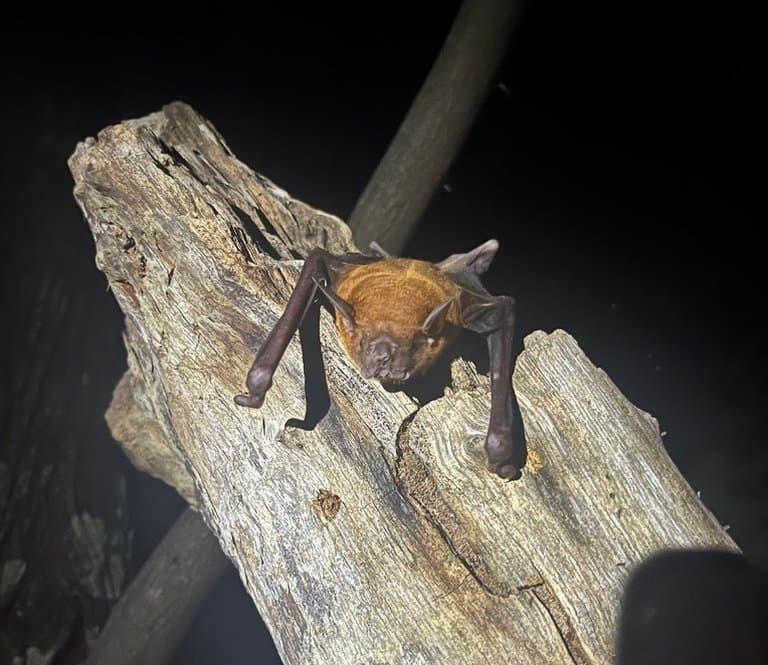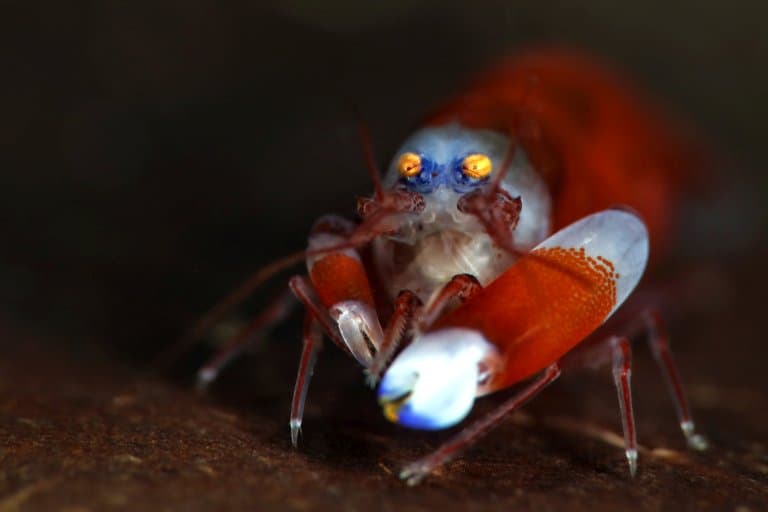Listening to a baby cry non-stop on an overnight flight may lead you to believe that humans are quite noisy animals. And nightclubs, football matches and Formula 1 could all back this up.
But in the animal kingdom, many animals have to compete with a cacophony of other species to get their message heard and since nobody likes to take turns, have consequently evolved deafening calls that cover great distances.
But sound is also used as a defence, or simply as a by-product of moving very, very fast. Here, we’ll look at ten of the loudest animals, loosely grouped by their taxonomic rankings, and what makes them stand out among the others.
10. Loudest Spider – Goliath Tarantula (dB unknown)
Spiders shouldn’t make noise at all; they’re quite frightening enough just sitting there, silently. But understanding how they do, makes it unsurprising that the largest of them all, the Goliath spiders, make the most noise.
Having no vocal cords (thankfully), Theraphosid spiders hiss. They do this by rubbing stiff bristles in their legs together, which creates a rasping, upsetting sound that’s a very effective deterrent.
This act is known as stridulation, and it’s performed in one way or another in a vast multitude of invertebrates.
Of all the spiders, the largest are the best, and while the pressure of the sounds hasn’t been recorded in terms of decibels, we know that in Goliaths, this hissing can be heard from several meters away.
9. Loudest Land Mammal – African Elephant (117 dB)
This might be the loudest sound you’ll never hear. African elephants make a fair amount of loud noise, but some of the louder calls are made below the threshold of the human aural perception.

Our hearing cuts out at frequencies of around 20Hz, yet this animal can communicate at frequencies as low as 15Hz, and these infrasonic messages have evolved to go under our radar – incidentally, radar begins around 300 times that frequency – and through the ground, reaching other elephants up to 10 km (6 miles) away.
Elephants have a hidden language and immense social intelligence that we haven’t yet fully appreciated, and part of this is shrouded amid their secret sub-sonic communications.
Their deep and ominous rumbling appears relatively quiet when up close, but this is mostly because the majority of the sound is too low for us to hear. 1
8. Loudest Frog – Coqui Frog (120 dB)
Since the unpleasant little ball of noise that is the desert tree frog made its rounds on the internet, we all learned that frogs can scream. Other, larger species, can scream even louder, and two new species might be the loudest yet discovered.
The appropriately named “Screaming tree frog” is one of two species of newly discovered, and quite noisy frogs that have been described as “super loud when they are trying to woo their mates”, though no quantifiable measure has been provided yet.
Two other contenders are the Coqui frog and the American bullfrog. Claims of the former little treefrog screaming at over 100 dB are rarely, if ever backed up by a source, but one member of the Acoustics Society of America reported a reading of 120 dB from right next to the Coqui frog.
The Carpenter frog, Rana virgatipes was recorded at 114 dB in an extensive assessment of noisy American frogs, and was measured from a greater distance, so is definitely in the running! 2
7. Loudest Insect – Cicada (120+dB)
There are plenty of contenders for the loudest insect. Two stand out immediately: the burrowing mole cricket, which builds an amplifier through which to blast its relentless song, and the infamous cicada, which spends years underground only to come out and make a heck of a din.
Mole crickets have been recorded at only 70 dB from 15cm away. Note that this suggests a substantially higher value if measured from the proximity that to coqui frog was recorded from.
The greengrocer cicada is said to hit peak volume at around 120dB “from close range” though this is difficult to verify since few care to back it up with a citation, so we don’t know the distance from which it was measured.

John M Petti from the Department of Entomology & Nematology at the University of Florida recorded a mean volume of 106.7 decibels at a distance of 50cm from the African cicada, Brevisana brevis, and this proves a significantly louder insect than the mole cricket.
It also implies an almost 12 dB increase at 15cm, making it roughly 119dB when measured from the same range as the cricket, and therefore perhaps around 140 dB from 1cm away. 3
6. Loudest Bird – White Bellbird (125.4 dB)
While insects take the night shift, birds are responsible for the daily chorus, and with all that competition, loudness is very useful.
Again, we have a few contenders. AllAboutParrots.com has a chart of its loudest, with the loudest being the Nanday Conure at 155 dB but without any sources, these numbers can be considered entirely imaginary.
Frontiers has backed a claim that the white bellbird can hit 125.4 dB, as published in Cell, but there are uncited claims that the Kakapo’s long-distance booming call reaches higher volumes than that.
The Kakapo can be heard from up to 5km away, which likely makes it very loud, but until someone comes up with a citation for the claim, the white bellbird has it. 4
5. Loudest Monkey – Howler Monkey (140 dB)
There is no primary citation for the commonly spouted 140 dB said to come out of a howler monkey’s mouth, but there is one from 1995 that estimates 90 dB at five meters.
If we extrapolate from that, we can estimate that a howler monkey recorded from around 15cm away would blast out at around 140 dB.

This is exceedingly loud, and recent research suggests there’s a little bit of overcompensation going on. Just like in people, the howlers demonstrate an inverse correlation between volume and testicle size.
If you want to know what they sound like but you’re hard of hearing, or if you’re reading this next to a sleeping person, Wikipedia has a very useful audio clip of howler monkey calls that’s subtitled, so you can read just how loud they are without causing a disturbance.
Unfortunately, the subtitles are only written in howler monkey, so we aren’t able to hear precisely what they’re saying, but you can tell from the use of capitals that it’s very loud. 5
4. Loudest Bat – Bulldog Bat (140dB+)
While elephants rent the lower frequency bands for their communication, bats take the higher end of the spectrum. You can sometimes hear some of the squeaks as they fly around looking for months and shouting so as not to bump into things, but these are the bat equivalent of a baritone, and the majority of squeaks are too high to be audible to us.

This has been known since the early 20th Century, but it’s only recently that researchers have discovered how loud some of these calls can get. Bats commonly shout at 120dB, which is about how loud a good rock concert is, and also, uncoincidentally, about as loud as you can get before your ears start to hurt.
But two species of Noctilio bats, the greater and lesser bulldog bats were found to hit 140db at their loudest. Because the decibel scale is logarithmic, each 10dB increase is a 10-fold increase in volume.
So this bat is 100 times as loud as its peers. This likely makes them very unpopular. 6
3. Loudest Fish – Gulf Corvina (177dB)
Ironically, the loudest fish is one that nobody’s ever heard of. Gulf Corvina have a specialised swim bladder surrounded by muscles that they can use to drum on the compressed air inside, creating a percussive boom that echoes for miles.

They do this when they’re horny, and a shoal of corvina can be the loudest fish in the ocean, banging on their sex drums and keeping all the octopuses awake.
The 177 dB boom sits this fish among the true heavyweights of the ocean, between the humpback and bowhead whales in the rankings of the noisiest animal.
This isn’t a unique quality for a fish, either. Over 1000 species are known to bang at one another in communication, bringing a new dimension to the lives of such animals that was previously overlooked. 7
2. Loudest Crustacean – Pistol Shrimp (218 dB)
This might be the loudest sound you’ve heard without realising it. Snapping shrimp make up over 600 species of crustaceans, and they make up some of the loudest animals in the world.
But unlike animals that shout, this sound is made, as the name suggests, by the snapping of its claw.

Like clicking a finger, the snapping shrimp make use of a heavily reinforced, calcified claw to create a cavitation bubble which shoots forward at 90 km/h and is enough to kill small fish.
At its peak pressure level, this pop is said to represent 218 dB, and 12 psi at 4cm from the claw. This whole click lasts less than one millisecond. As the bubble collapses, it generates such high energy that it produces light.
Interestingly, these are the only marine eusocial animals. When found in large colonies, all the noise they make can interfere with human sonar. It’s commonly heard by swimmers as a background sound, like hard pebbles banging together.
1. Loudest Animal – Sperm Whale (230 dB)
The loudest animal on the planet is also the most awesome and alien animal that exists. While the largest animal in the world, ever, the Blue whale, can shout across a thousand miles of ocean at 188 dB, the sperm whale knocks it out of the water.
Sperm whales communicate at a lower frequency than blue whales and their calls come in a variety of styles, but there’s one specific sound they make that beats any other animal known in terms of loudness.
The “knocking” of sperm whales has been described as far back as the 1800s when whalers talked of loud hammering on the ship’s hull. This led to their nickname, “carpenter fish”.
In fact, this knocking is an immensely powerful investigation sound, a form of echolocation, and one way the animal scans its surroundings. It’s so powerful that it has been said to paralyze the limbs of people who’ve come into close contact with sperm whales, and there and some hypothesise that focused knocks like this could be used to stun squid in the deepest parts of the ocean.
Sperm whales have an intricate vocal language, and quite clearly talk to one another with dialects and names, and even embark on hunts with a trumpeting sound. While we have no idea yet what they’re saying, groups like CETI are putting a lot of work into finding out.
In terms of non-human intelligence, CETI is at the forefront, dealing with the very real and very intelligent creatures most people take for granted. 8
Final Thoughts
There’s quite a bit more to sound than simple decibel level, as you may have noticed from this list. The frequency of the sound plays a huge role in how far it’s transmitted, as does the medium through which it’s travelling.
Loudness is generally a subjective measure of the perceived volume of a sound, rather than purely its amplitude, meaning an elephant screaming at 15 Hz may hit 117 dB and be totally inaudible compared with the hiss of a spider, which evolved to hit us right in the audible frequencies but has a far lower pressure.
Perhaps the most important thing to point out is that volume increases exponentially with proximity, so each time you halve the distance of the recording device from the sound, you can add roughly 6dB to the volume.
This means that without the information on how far away the sound was recorded, it’s impossible to accurately compare calls. Still, we’ve compiled this loudest animals in the world list in roughly the order they would appear in the real world and give you some courses to check, in case you disagree!
Fact Sources & References
- “Crack the Code of Elephant Communication“, PBS.
- Peter M. Narins (1998), “Frog Communication“, Scientific American.
- “Greengrocer Cicada“, Australian Museum.
- Katherine J. Wu (2019), “World’s loudest bird flirts by screaming in your face“, PBS.
- Jason G. Goldman (2015), “Howler Monkeys Trade Testicles for Decibels“, Scientific American.
- “Pictures: Meet some of the world’s noisiest animals“, CBBC.
- Rachel Nuwer (2017), “Massive Fish Orgy Produces One of the Loudest Noises under the Sea“, Scientific American.
- Eric Wagner (2011), “The Sperm Whale’s Deadly Call“, Smithsonian Mag.
